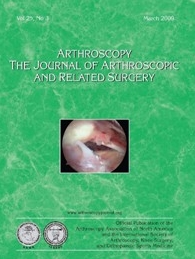
SPORTS MEDICINE
Double-bundle ACLR provides better rotational stability vs single-bundle ACLR
Arthroscopy. 2016 Sep;32(9):1887-904. doi: 10.1016/j.arthro.2016.03.008. Epub 2016 May 13.22 studies (15 RCTs and 7 prospective cohorts) were included in this systematic review and meta-analysis to provide a comprehensive synthesis of evidence comparing anatomic double-bundle anterior cruciate ligament reconstruction (DB-ACLR) and anatomical single-bundle anterior cruciate ligament reconstruction (SB-ACLR) while accounting for the different drilling techniques applied. The results of this meta-analysis indicated that regardless of femroal drilling technique used (transtibial or independent) in SB-ACLR, DB-ACLR provided significantly greater rotational stability. The study also identified differences between SB-ACLR drilling techniques when compared to DB-ACLR, indicating that when an independent drilling technique was used, there were no significant differences in anterior laxity or IKDC scores, while the use of a transtibial drilling technique for SB-ACLR resulted in greater anterior laxity and worse IKDC objective scores in comparison to DB-ACLR.
Unlock the full ACE Report
You have access to {0} free articles per month.Click below to unlock and view this {1}
Unlock NowCritical appraisals of the latest, high-impact randomized controlled trials and systematic reviews in orthopaedics
Access to OrthoEvidence podcast content, including collaborations with the Journal of Bone and Joint Surgery, interviews with internationally recognized surgeons, and roundtable discussions on orthopaedic news and topics
Subscription to The Pulse, a twice-weekly evidence-based newsletter designed to help you make better clinical decisions
Exclusive access to original content articles, including in-house systematic reviews, and articles on health research methods and hot orthopaedic topics
Or upgrade today and gain access to all OrthoEvidence content for just $1.99 per week.
Already have an account? Log in


Subscribe to "The Pulse"
Evidence-Based Orthopaedics direct to your inbox.
{0} of {1} free articles
Become an OrthoEvidence Premium Member. Expand your perspective with high-quality evidence.
Upgrade Now












































































